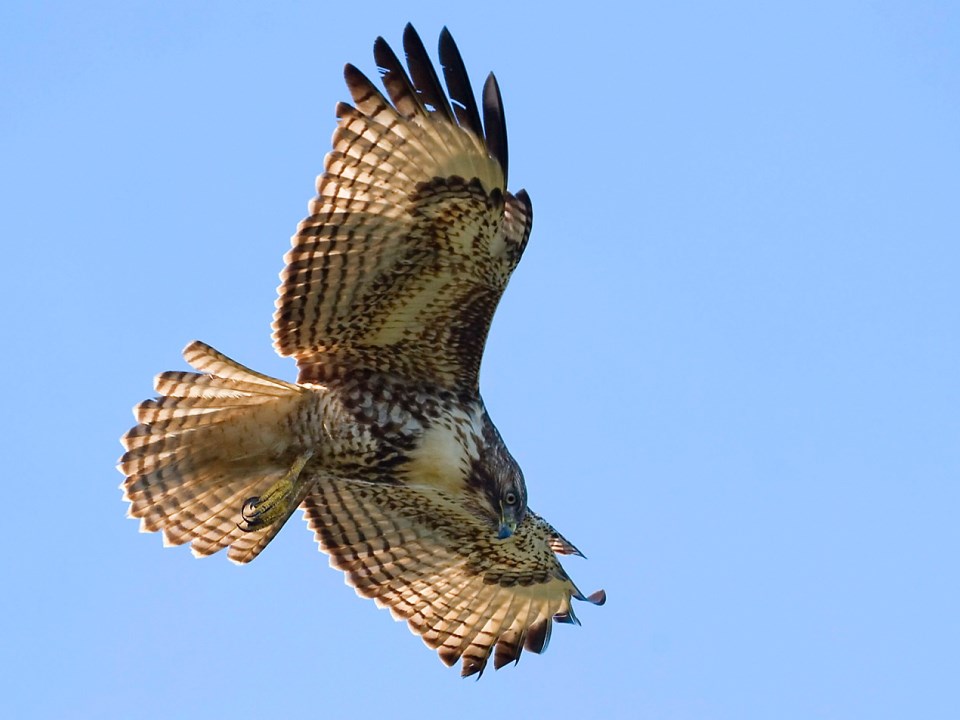Last updated: August 26, 2021
Article
This Fall Watch for Hawks Along the Lewis and Clark Trail

NPS Photo
As summer ends, prime hawk-watching season is approaching along the Lewis and Clark Trail! Make your plans to get a glimpse of these raptors in the wild.

NPS / Jacob W. Frank
For birders along the Lewis and Clark National Historic Trail, fall can be a really exciting time! Starting in the late summer, over 300 North American bird species begin to migrate, moving from their Spring and Summer breeding and nesting habitat to their temperate winter habitat. But, it isn’t until the early Fall that some of the most awe inspiring species start their migration; getting birders on the edges of their seats and constantly refreshing their weather forecasts.
In North America, many hawk species migrate in early Spring and Early fall and fly primarily during daylight hours, which gives birders – or in this case, hawk-watchers – the potential for prime views of these primal creatures. In the fall, weather is a significant factor in planning hawk-watching experiences. Typically, the best views of hawks will be had the day of and the day after a cold front passes. But, depending on the species of hawk you’re watching, wind speed may significantly impact their ability to fly.
Hawk identification may be challenging for novice and veteran hawk-watchers alike, so it’s important to gather identification resources before you go hawk-watching. A free printable silhouette guide, like the one available from the Hawk Migration Association of North America, is a good tool to have when identifying migrating hawks.
In 1806, Capt. Meriwether Lewis recorded his own hawk-watching experience on the shores of the Columbia River, which may have been a glimpse of the Spring migration. On March 3, Lewis wrote,
“I observe no difference either between the hawks of this coast and those of the Atlantic. I have observed the large brown hawk, the small or sparrow hawk, and the hawk of an intermediate size with a long tail and blewish coloured wings remarkably swift in flight and very firce. sometimes called in the U' States the hen hawk. these birds seem to be common to every part of this country, and the hawks crows & ravens build their nests in great numbers along the high and inaccessable clifts of the Columbia river and it's S. E. branch where we passed along them.”
If you’re interested in getting in on a hawk-watch this Fall, there are many organizations around the county who host hawk-watching events. Local Audubon Society chapters, local naturalist groups, or area nature preserves may be great places to start to find out where your best chance is to view these amazing raptors!
